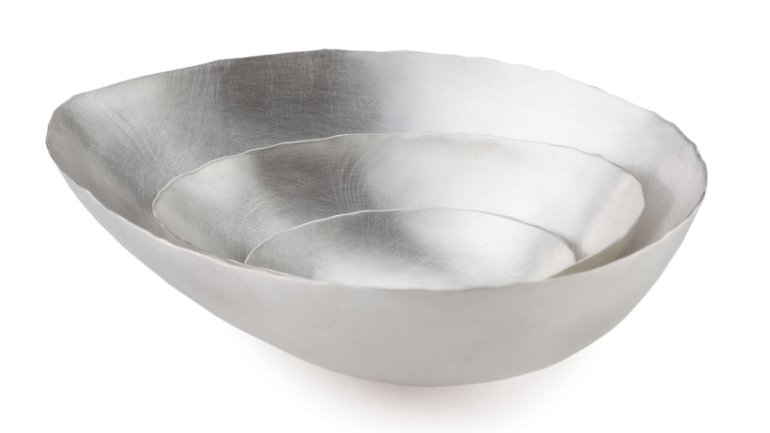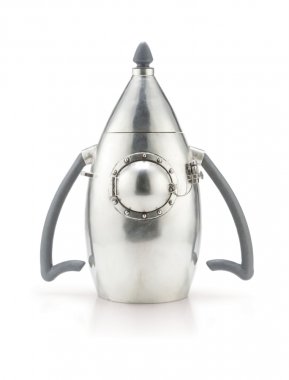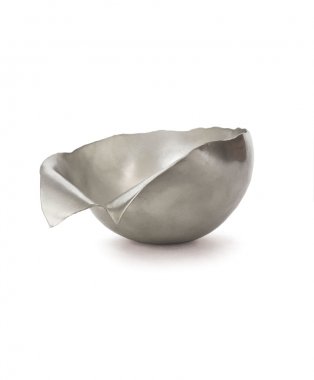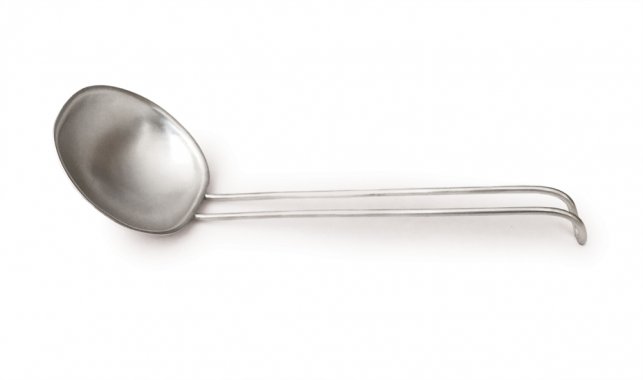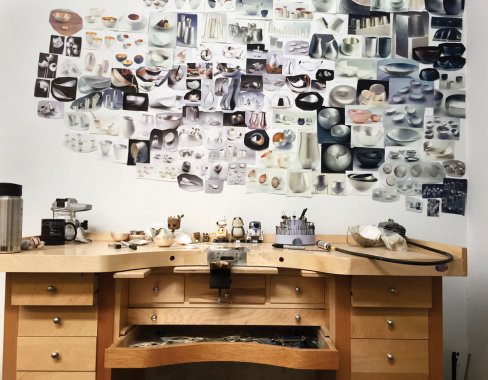Sara Thompson
Sara Thompson
For Sara Thompson, silver is the “Goldilocks metal.”
“I’ve worked in copper, brass, nickel, steel,” says the 22-year-old metalsmith, who is quickly becoming known not only for her jewelry, but also for her science- and math-informed vessels. “I’ve worked in high-karat gold and low-karat gold. Copper is too elastic-y, or it’s too sticky and doesn’t hold its shape as nicely as silver does.” Brass, she says, is hard to move “upwards into a three-dimensional form.”
Silver is different. “It moves, but it retains its form. It’s just right,” she says.
Thompson’s pieces – elegant spoons, sugar bowls, platters, and Rocket Ship vessels, among others – were originally conceived as she finished her BFA at Oregon College of Art and Craft in 2017. Her rise since then has been meteoric: She quickly garnered private commissions, unusual for someone so young. She also has been accepted by every art and craft show she’s applied to, including prestigious venues such as CraftBoston and the Smithsonian Craft Show; she won the Award of Excellence at the ACC Baltimore show in February.
The self-proclaimed “science nerd” reads quantum physics books in her spare time; quirky physicist Richard Feynman is a favorite. She takes the knowledge she’s gleaned to create vessels suffused with mathematical principles.
“In some of my work, the mathematical and scientific point is very basic,” she says. “For example, whole numbers are counting numbers – 1, 2, 3, 4, and so on. So [in] a set of my bowls, each bowl starts out as a flat sheet of silver, and the bowls are either 4, 5, or 6 inches in diameter, so you can see how one whole number affects their scale.”
“She’s done a lot of really strong work, but the work that stands out the most is probably the vessels,” says mentor Christine Clark, who heads the metals department at OCAC. “The sizes she chose to use and the way she manipulated the materials were in direct relationship to her ideas behind the physics of space.” The vessels do more than contain things, Clark says; they express complex concepts.
Now splitting her time between Portland and Massachusetts’ Martha’s Vineyard, where she grew up, the soft-spoken Thompson is on her way. She’s still figuring out how to balance pricing with the cost of materials, and she concedes that participating in a new show every few weeks, as she did for a while, is a tad ambitious. But she’s learned that she enjoys meeting potential clients and considering their responses to her designs.
“I have some clients who use them – the dinner sets and sugar bowls,” she says. “I have other clients who like to have my work hanging in their kitchen or resting on their mantel.”
For now, at least, she’s found her sweet spot: “My work exists in the gray area between fine art and functional art.”
Science + Art
Why physics? The smallest scale in nature governs the basic workings of everything in the universe – a fact that fascinates Thompson. “If a certain particle was a different weight or a force had a different charge,” she notes, everything would shift. “The rules that govern the small things in the quantum physics realm have incredible implications in the macroscopic world.”
Why Oregon College of Art and Craft? Thompson graduated from high school at 16, on a path to attend an Ivy League school; but along the way, she realized she didn’t “want to go be a data analyst or be a researcher in a lab.” She’d been apprenticing with a jeweler, learning to polish and solder, and enjoyed the work. “A week after I turned 17, I moved to Portland to start undergrad.”


